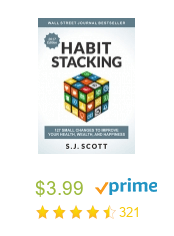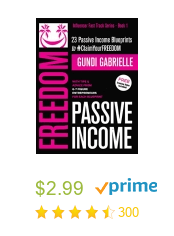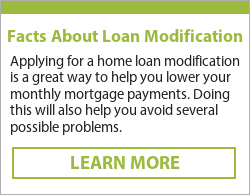
7 Essential Issues To Consider About Loan Modification

Issues To Deal With In Loan Modification
Are you thinking about applying for a loan modification, but you aren't sure if this is the right step to take? Before doing this, it's crucial to study all your options first. A loan modification could be a prudent choice, which is what many homeowners who are also having financial problems opt for.
A loan modification may be the best choice if you are presently dealing with financial problems, or perhaps if you are having a hard time paying your mortgage payments every month. A lot of homeowners nowadays opt for a loan modification so that they won't have to deal with foreclosure in the future. In order to make a good decision regarding the issue, read on below for other helpful details.

1What Can Loan Modification Do For Me?
To a lender, loan modification has two main objectives. First, your lender wants you to pay back the total mortgage amount someday. Second, your lender also wants you to pay the highest amount that you can every month. Still, since you applied for a loan modification because of financial issues, your goal should be to pay the minimum every month. If possible, opt for a fee that's next to nothing.
You and your lender must compromise, which means that your lender should not only reduce loss and make profits. But, your agreement should still allow you to keep your property without you being dragged down by your mortgage. Keep in mind, that arriving at a compromise is easier said than done, as both parties (you and your lender) will have different ideas as regards what's fair.

2What Is A "Fair" Deal To A Lender?
Most people believe that the best way to reduce the balance on the value of their homes is by re-amortizing the mortgage with a 3% interest rate. But, a lender will have a different concept about what's fair. To most lenders, a fair deal is like this: lowering the interest rate to 4% for around three years, which is then followed by incremental increases based on market interest rates, and benefiting from fees, penalties, and other deficiencies or charges.
A fair deal, on the other hand, is something in between these two extreme scenarios. In the U.S., the Treasury Department imposes certain rules to help borrowers and lenders in coming up with a deal that is equitable to both parties. It has to be a deal that allows homeowners to pay readily for their monthly mortgage fees.

3How Much Is Really "Affordable?"
The federal government illustrates what an affordable monthly payment looks like via their website. Here, the baseline used to determine fair payment on a mortgage loan is 31%. If you want to know how the federal government will compute your monthly fees, you may check their site so that you'll see what's supposedly fair based on your unique financial situation. The MHA (Making Home Affordable) program includes several loans, such as FHA (Federal Housing Administration) and VA (Veterans Affairs) loans, loans managed by participating lenders, as well as Fannie Mae (Federal National Mortgage Association) and Freddie Mac (Federal Home Loan Mortgage Corporation) loans.
Nevertheless, it is still the Treasury Department that determines a fair deal via the affordability DTI (debt-to-income) ratio. The main goal is to come up with an amount that makes house payment affordable to a homeowner. Moreover, there are specific criteria for a loan modification. To explain, the front-end DTI ratio should be 31% or less, and the mortgage payment together with taxes, insurance, and other extras, must not be greater than 31% of the monthly gross income. In addition, the back-end DTI ratio should be 55% or less.

4What Is Debt Counseling?
It's imperative to ensure that the total of all monthly payments should remain at 55% or less of the gross monthly income. This amount should already include credit card payments, auto loan payments, mortgage or debt payments, and others. In this case, a person could benefit from debt counseling.
Homeowners can also follow recommended MHA programs. This MHA plans to aid homeowners in achieving a 31% DTI ratio by lowering the mortgage interest rate so that the opening DTI will also be reduced. The Treasury will also match added reductions in the payments with a lender to obtain the required 31% front-end DTI. To achieve this target, the lender can do the following in the exact order: reduce the interest, lengthen the term of the mortgage, and lower the principal balance.

5What About Term Extensions?
Loan modification encourages lenders to look at other ways to lower the interest rate. In case reducing the interest won't be effective in making payments more affordable, a lender's second option is to consider extending the term. In case these two options fail to work, the third step is to lower the principal amount.
The plan allows lenders to deviate from the customary guidelines so that they can make the loans more affordable to homeowners, which then gives people relief from their debts. Most plans are accepted as long as both the lender and borrower come up with a plan that follows the 31% front-end DTI ratio. But another issue should also be carefully considered, and this is keeping the back-end DTI at 55% or even less.

6Should One Work With A Credit Counselor?
Homeowners with a back-end DTI ratio above 55% are required to sign a letter that shows their agreement to work with a counselor, who has been approved by the HUD or the U.S. Department of House and Urban Development. Any changes on their loans will only take effect once they have the said statements, wherein they promise to obtain credit counseling from an approved representative. Yet, it is still possible for the MHA guidelines to change at any time.
This usually does not apply to all lenders, investors, or other services. Through the MHA, lenders interpret fairness in a slightly different way. The MHA expects all lenders or participants of the program to utilize the NPV (net present value) when considering every mortgage loan that is facing default, and/or those loans that are at least 60 days past their due as determined by the delinquency computation of the Mortgage Bankers Association.

7What Is The NPV Test?
The NPV test uses several complicated formulas that assess property value, cure rate, liquidation value, selling cost, REO stigma discount (which refers to the stigma linked to repossessed properties), marketing time, re-default rate, and depreciation. An NPV tool provided by the Treasury Department is used to check whether or not a mortgage passes the test. This tool makes the determination quick and efficient, as lenders only need to input details into the system.
In essence, a participant of this MHA program or a lender will only be required to modify a person's mortgage if the NPV results prove that the cost to modify will be less than the foreclosure. Thus, this is the only time that a lender is required to adjust the mortgage. But, it is his own decision to modify a loan or not if it fails the NPV test.
Hopefully, what you learned here has shed some light on the issue regarding a loan modification. Getting loan modification is challenging, and you will face many hindrances during the processing stage; however, all your efforts will be worth it if you will be able to keep your home and avoid foreclosure. In case you are facing financial problems today, don't wallow in despair. Instead, take action and see what your options are because perhaps, loan modification is the answer to your problems.
About Author
Jackie Wing
GET THE FREE MAGAZINE DELIVERED STRAIGHT TO YOU:









































